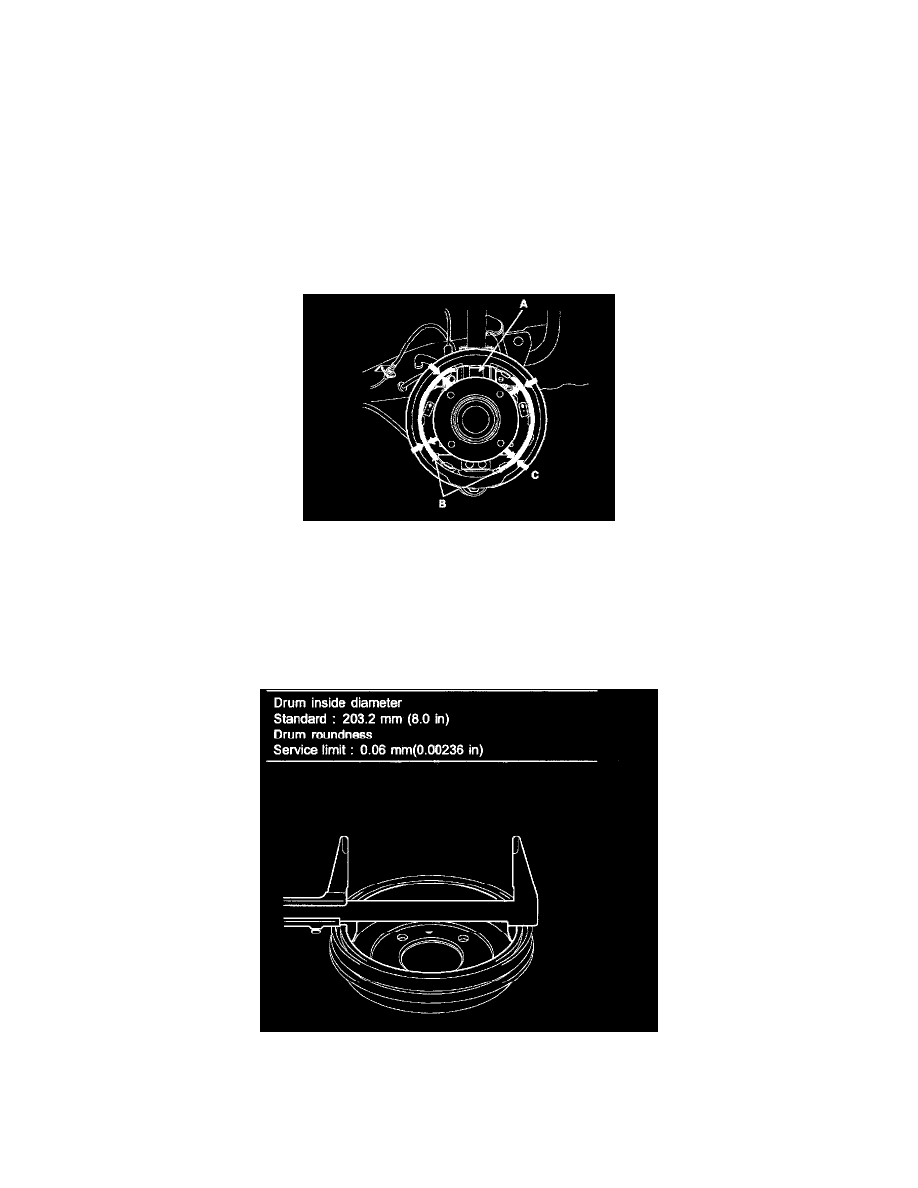Rio5 L4-1.6L (2006)

Brake Drum: Testing and Inspection
INSPECTION
CAUTION: Frequent inhalation of brake pad dust, regardless of material composition, could be hazardous to your health.
-
Avoid breathing dust particles.
-
Never use an air hose or brush to clean brake assemblies.
NOTE:
^
Contaminated brake linings or drums reduce stopping ability.
^
Block the front wheels before jacking up the rear of the vehicle.
1. Raise the rear of the vehicle, and make sure it is securely supported.
2. Release the parking brake, and remove the rear brake drum.
3. Check the wheel cylinder (A) for leakage.
4. Check the brake linings (B) for cracking, glazing, wear, and contamination.
5. Measure the brake lining thickness (C). Measurement does not include brake shoe thickness.
Brake lining thickness
Standard: 3.9 - 4.5 mm (0.15 - 0.177 inch)
Service limit: 1.0 mm (0.039 inch)
6. If the brake lining thickness is less than the service limit, replace the brake shoes as a set.
7. Check the bearings in the hub unit for smooth operation. If it requires servicing, replace it.
8. Measure the inside diameter of the brake drum with inside vernier calipers.
9. If the inside diameter of the brake drum is more than the service limit, replace the brake drum.
10. Check the brake drum for scoring, grooves, and cracks.
11. Inspect the brake lining and drum for proper contact.
12. Inspect the wheel cylinder outside for excessive wear and damage.
13. Inspect the backing plate for wear or damage.
